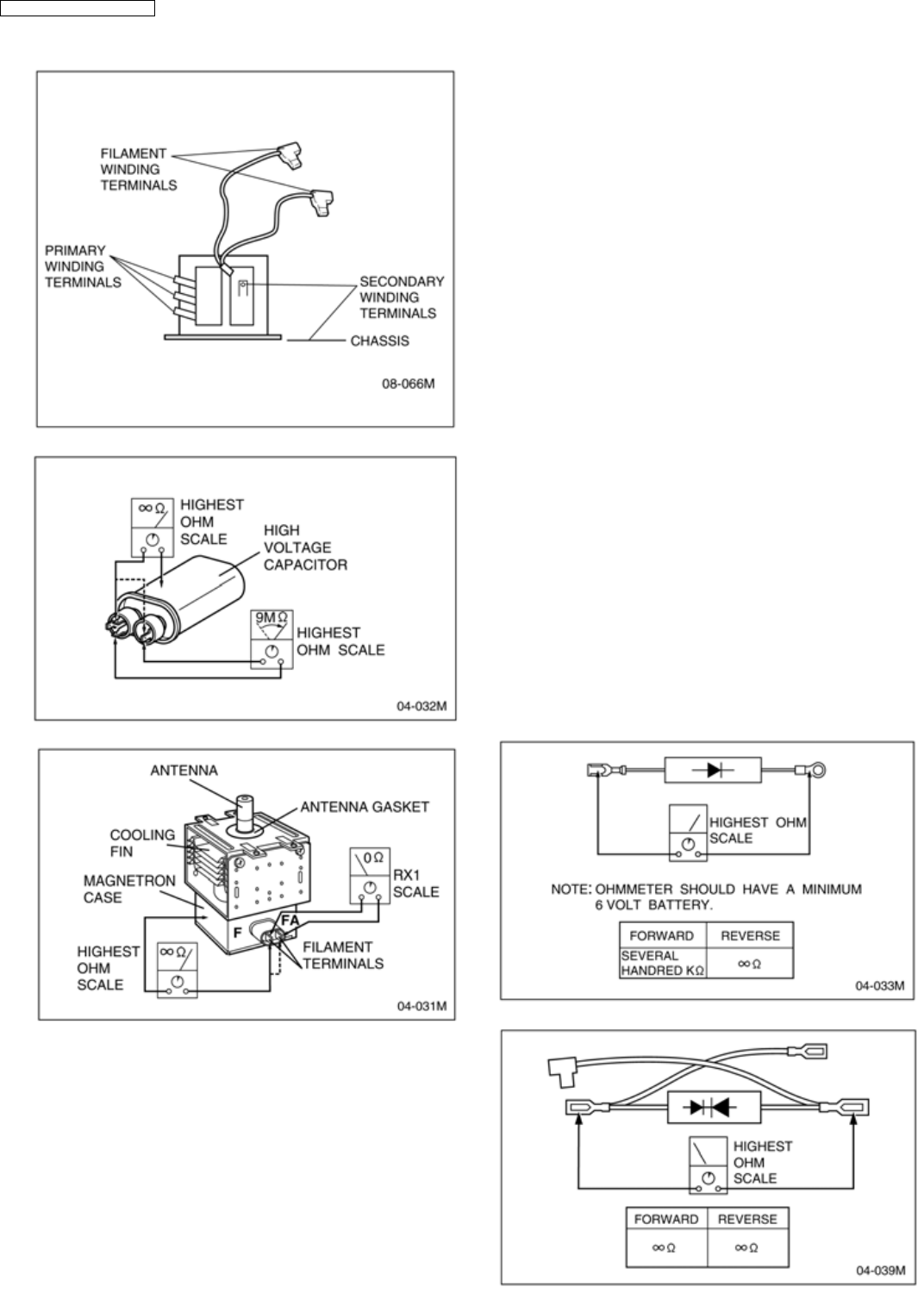
12.6. Diode
1. Isolate the diode from the circuit by disconnecting the leads.
2. With the ohmmeter set on the highest resistance scale,
measure the resistance across the diode terminals.
Reverse the meter leads and again observe the resistance
reading. Meter with 6V, 9V or higher voltage batteries
should be used to check the front-to-back resistance of the
diode, otherwise an infinite resistance may be read in both
directions. A normal diode’s resistance will be infinite in one
direction and several hundred kΩ in the other direction.
12.7. Membrane key board
(Membrane switch assembly)
Check continuity between switch terminals, by tapping an
appropriate pad on the key board. The contacts assignment of
the respective pads on the key board is as shown in digital
programmer circuit.
12.8. Protector diode
1. Isolate the protector diode assembly from the circuit by
disconnecting its leads.
2. With the ohmmeter set on the highest resistance scale,
measure the resistance across the protector diode
terminals. Reverse the meter leads and again observe the
resistance reading. A normal protector diode’s resistance
will be infinite in both directions. It is faulty if it shows
continuity in one or both directions.
12.9. Temp sensor (Thermal
protector)
A temp sensor is mounted on exhaust guide. Its purpose is to
automatically shut off the oven in case the cavity overheats for
any reason.
The thermal protector will operate at 257°F (125°C).
The device is connected to the DPC on touch control models.
When the thermal protector exceeds its temperature it will turn
off the power to oven cavity and display will go to reset mode.
The cooking program can be reset after cool-down.
THERMISTOR RESISTANCE VALUE
30K — 120K at 10°C — 30°C (50°F — 86°F)
22
NE-3280 / NE-2180 / NE-2180C


















